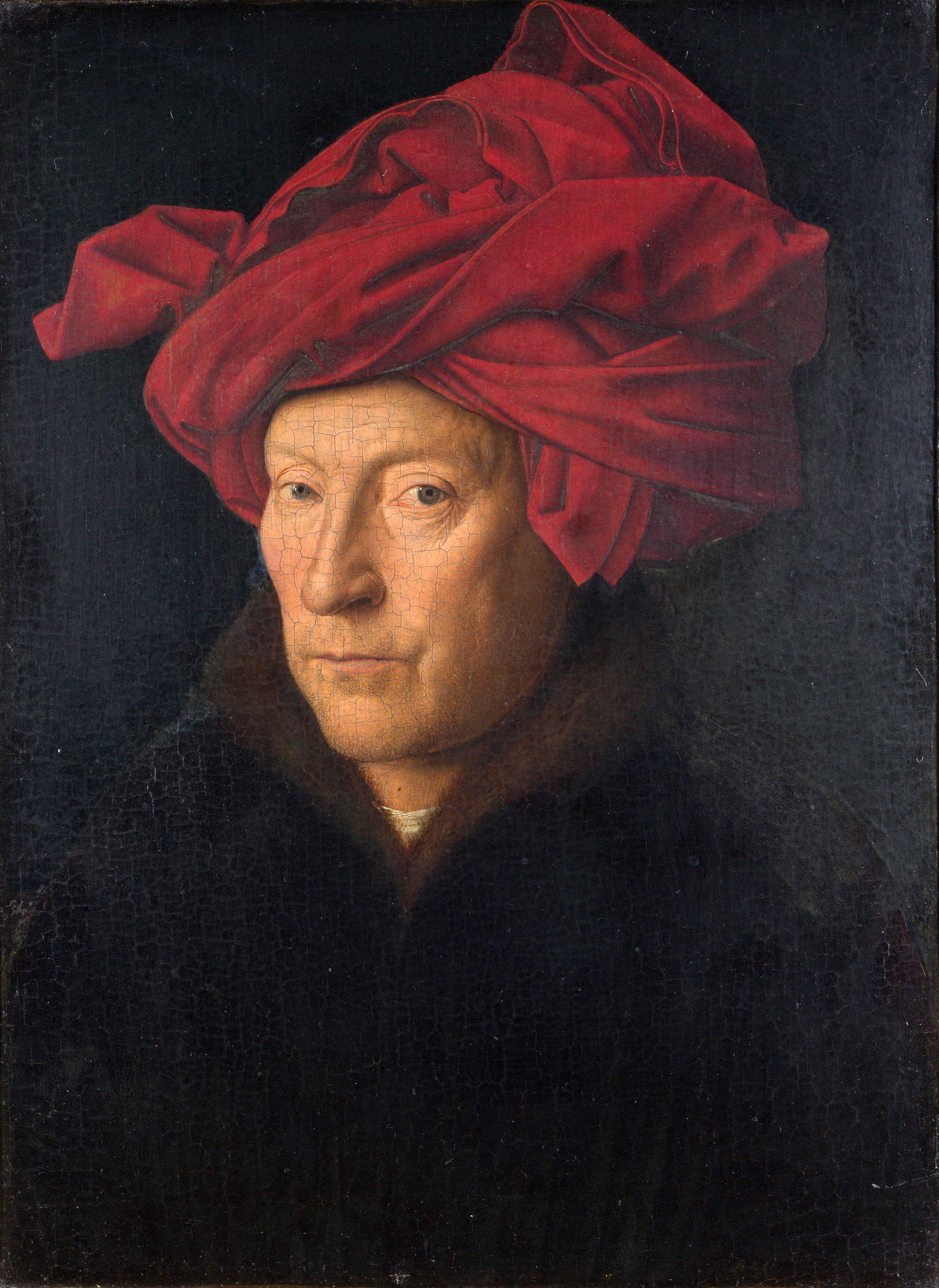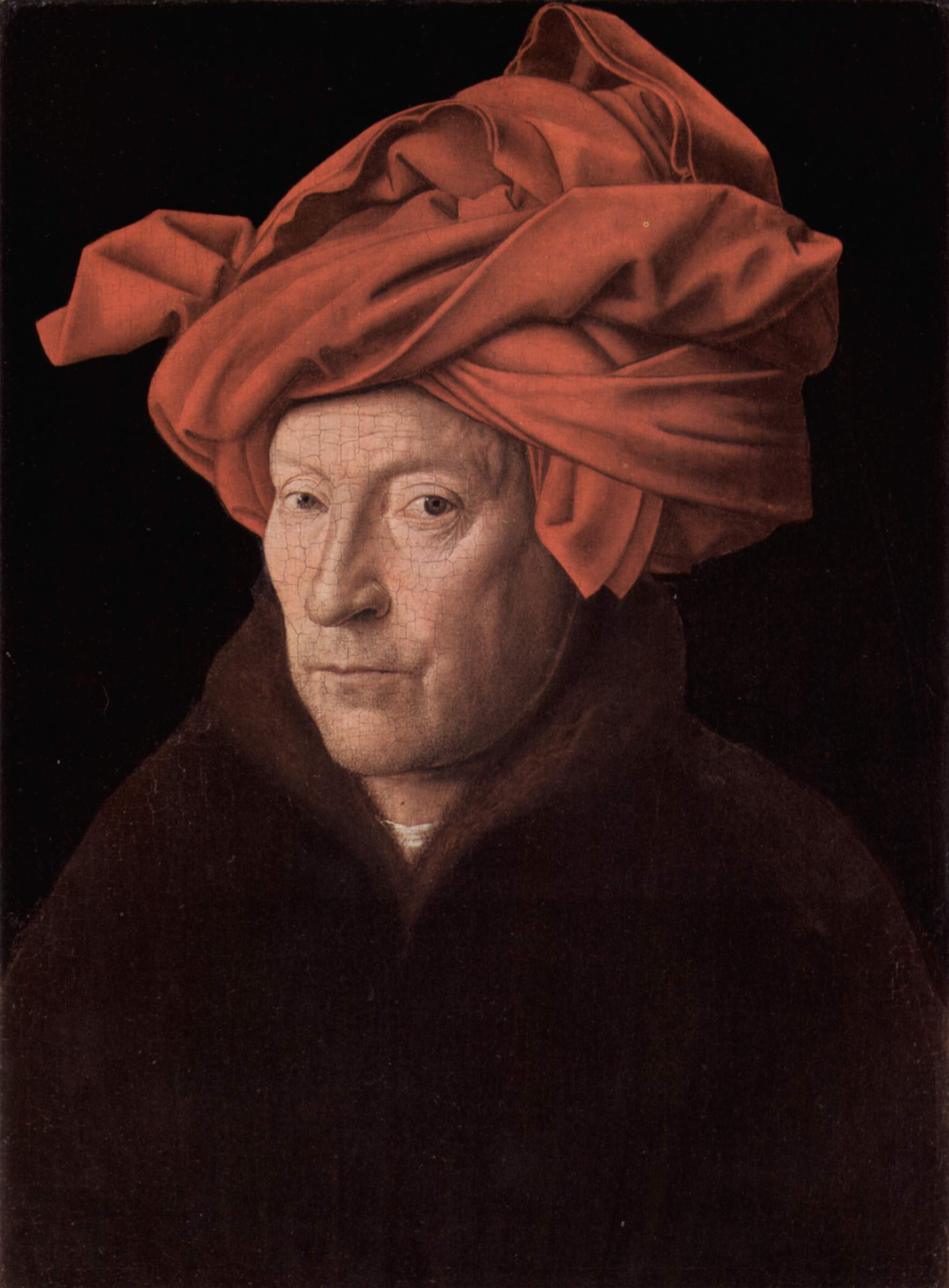Like all Van Eyck's portraits, there is a sharp and detailed analysis of physical lines, that lacks, however, any treatment of the subject's thoughts or mood. The subject is often thought to be van Eyck himself, though there is no direct evidence to support this. Although the painting is also known as Portrait of a Man in a Turban, the headgear that the man is wearing is not in fact a turban, but a chaperon, with the ends that would normally hang down tied up over the top, a sensible precaution if it was being worn whilst painting.
The original frame survives and has the painted inscription JOHES DE EYCK ME FECIT ANO MCCCC.33. 21. OCTOBRIS ("Jan Van Eyck Made Me on October 21, 1433") at the bottom and at the top the motto AlC IXH XAN ("I Do as I Can"), which appears on other van Eyck paintings, always written in Greek letters, including a pun on his name. As on other van Eyck frames, the letters are painted to appear carved.
It is interesting to note that a similar chaperon is worn by a figure appearing in the background of van Eyck's Rolin Madonna, which has also been suggested to depict the artist.
This one was for George. Thank you and have a great day! :)


 Jan van Eyck
Jan van Eyck